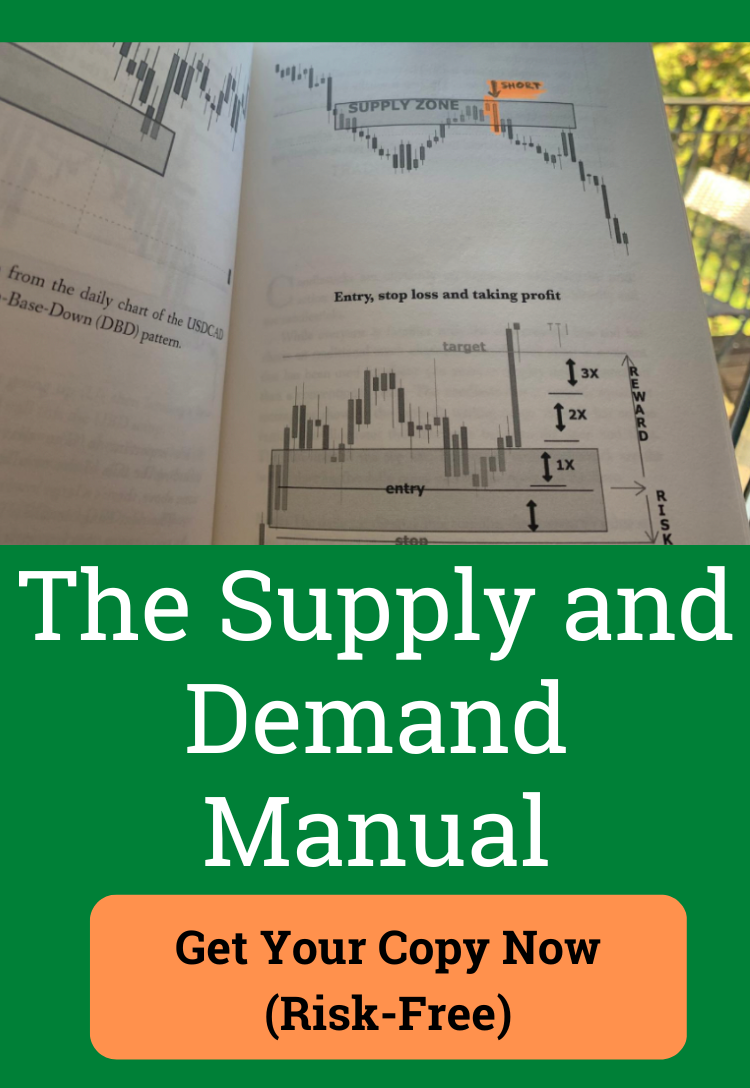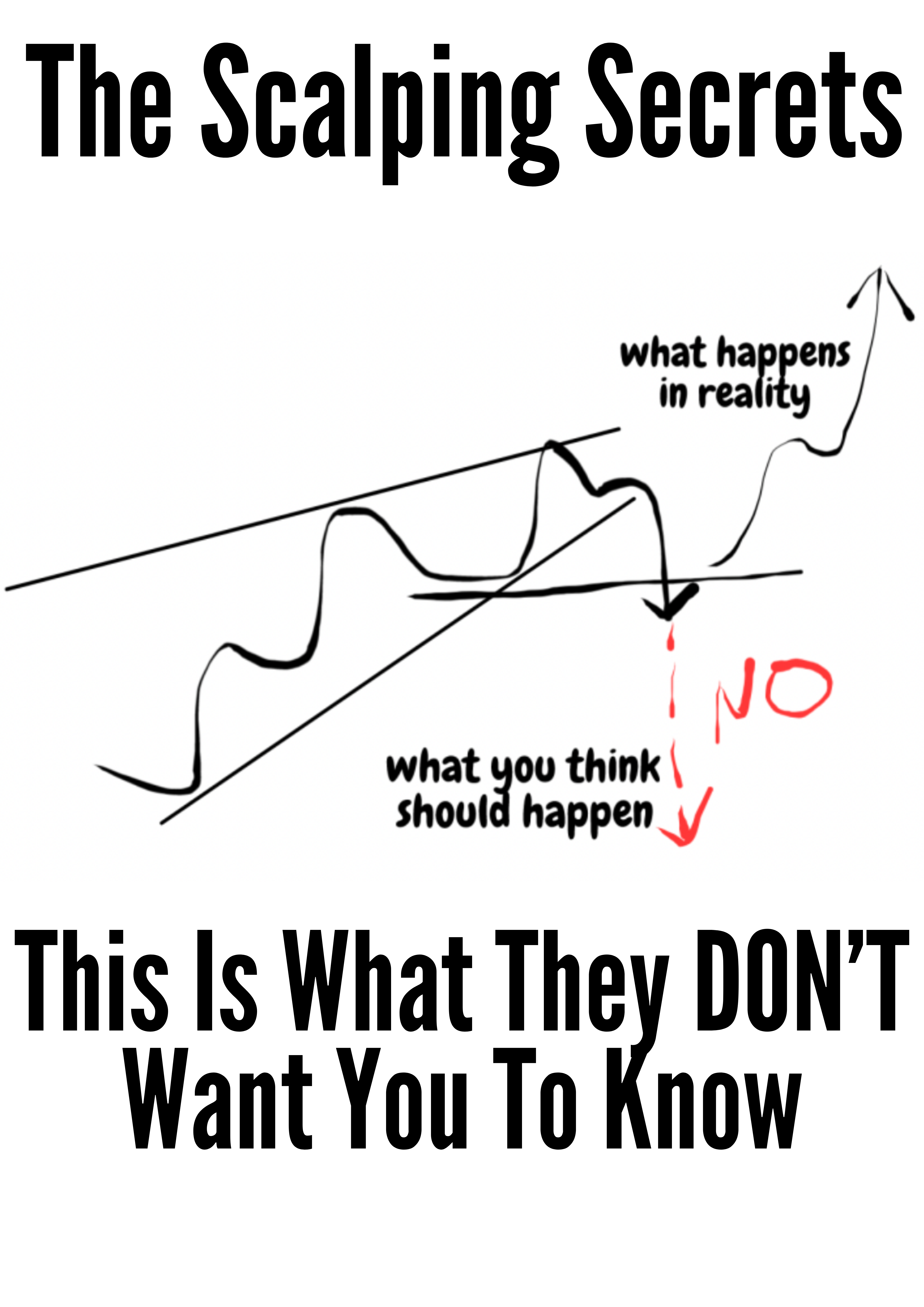How To Start Trading For Beginners: Your Complete Guide
Understanding What Trading Really Means For Beginners
Trading essentially boils down to buying and selling assets to profit from price changes. These assets can be anything from stocks and bonds to currencies and commodities. As a trader, you're always analyzing markets, trying to predict future price movements, and making strategic decisions.
It's more than just clicking buttons and watching the numbers change. It's about understanding how the market works and creating a robust trading strategy. If you’re just starting out, you might find this helpful: Best Trading Books For Beginners.
Beyond the Hype: The Realities of Trading
Many new traders enter the market with unrealistic expectations, often driven by stories of quick fortunes. The reality is that successful trading takes time, dedication, and a thorough understanding of market mechanics.
New traders, for example, often underestimate the importance of risk management and emotional control. This can lead to impulsive decisions and substantial losses. It's essential to approach trading with a realistic perspective, focusing on long-term growth.
Market Dynamics and Participants
Understanding the forces that drive market movements is key for any aspiring trader. This involves analyzing the relationship between supply and demand, along with the impact of economic factors and global events.
Understanding the various market players, from individual investors to large institutions, can offer valuable insights into market behavior. Knowing how institutional investors react to particular news, for instance, can help predict market trends.
Beginning traders also need to grasp the global market landscape. The foreign exchange market (Forex), is one of the largest financial markets, known for its liquidity and volatility. It handles an average daily trading volume exceeding $6 trillion, making it an important area for beginners to learn about. More detailed statistics can be found here.
Building a Solid Foundation
Before making your first trade, it's vital to build a strong foundation. This involves selecting the right broker, creating a trading plan, and developing a risk management strategy.
A well-defined trading plan serves as your roadmap, outlining your objectives, preferred trading style, and risk tolerance. Effective risk management is crucial to protect your capital and minimize potential losses. This involves determining how much you're willing to risk on each trade and setting appropriate stop-loss orders. Building this foundation significantly improves your chances of long-term success in trading.
Choosing The Right Markets For Your First Trades
The infographic shows a user setting up a trading account, a critical first step for new traders. Choosing the right market from the outset is vital, as your initial account setup often determines your available trading options. A well-chosen starting point sets the stage for a smoother, more successful trading experience. This brings us to the next key decision: picking the right markets for your first trades.
The sheer volume of available markets can be overwhelming for beginners. Finding a starting point can feel daunting. However, understanding the core characteristics of each market can simplify this process. This involves evaluating aspects such as volatility, liquidity, and potential returns, all of which will significantly shape your early trading journey.
Understanding Different Asset Classes
Trading successfully requires a solid grasp of asset classes. These are broad categories of investments with similar characteristics, each with its own risk and reward profile. Understanding these categories helps diversify your portfolio and manage risk effectively. Diversification across different asset classes is crucial for anyone entering the markets. There are six primary asset classes: Stocks, ETFs, Bonds, Forex, Cryptocurrencies, and Commodities. Each asset class presents unique opportunities and risks, making it important for beginners to understand their individual dynamics. Learn more about these asset classes here.
-
Stocks: Represent ownership in a company, offering potentially high growth but also higher volatility.
-
ETFs (Exchange Traded Funds): Baskets of securities traded like stocks, offering a convenient way to diversify your holdings.
-
Bonds: Essentially loans to governments or corporations. They are generally considered less risky than stocks, but with potentially lower returns.
-
Forex (Foreign Exchange): Trading currencies against each other. The Forex market is known for its high liquidity and volatility.
-
Cryptocurrencies: Digital or virtual currencies using cryptography for security. They are notoriously volatile and speculative.
-
Commodities: Raw materials or primary agricultural products, like gold, oil, or wheat. Commodity prices are strongly influenced by supply and demand.
To help beginners better understand the nuances of each asset class, the following table provides a comparison:
Asset Classes Comparison For Beginners: A comprehensive comparison of the six major asset classes showing risk levels, typical returns, and beginner-friendliness
| Asset Class | Risk Level | Potential Returns | Beginner Difficulty | Minimum Investment |
|---|---|---|---|---|
| Stocks | Medium to High | High | Medium | Varies (can be low with fractional shares) |
| ETFs | Low to High (depends on ETF composition) | Moderate to High | Easy | Price of one share |
| Bonds | Low to Medium | Low to Moderate | Easy | Varies (can be as low as $1,000) |
| Forex | High | High | Hard | Varies (can be low with some brokers) |
| Cryptocurrencies | Very High | Very High | Hard | Varies (can be very low) |
| Commodities | Medium to High | Moderate to High | Medium | Varies (can be accessed through futures contracts which have higher minimums) |
This table summarizes the key characteristics of each asset class to assist you in making informed investment decisions. Remember to research further before investing.
Matching Markets to Your Goals
Different markets align with varying financial goals. Stocks or ETFs might be suitable for long-term growth, while Forex or cryptocurrencies could be more appealing if you're comfortable with higher risk and seeking shorter-term gains. Carefully considering your risk tolerance and financial objectives is paramount before selecting a market.
Evaluating Market Characteristics
Understanding market volatility is essential. Highly volatile markets can yield quick profits, but also carry the risk of significant losses. Liquidity, or how easily an asset can be bought or sold, is another key factor. Highly liquid markets allow swift entry and exit from trades. Finally, market correlation, how different markets move in relation to each other, is critical for diversification. If two assets consistently move in tandem, holding both offers limited diversification benefits.
Building Your Trading Foundation The Right Way
Picking the right markets is only the first step. Successful trading hinges on careful planning and a solid grasp of the practicalities involved. This section covers the essential groundwork every new trader needs before making that first trade.
Choosing the Right Broker
Choosing a broker is crucial. Consider factors like trading fees, available markets, and regulatory compliance. Some brokers specialize in particular assets like Forex or options, while others offer a wider range of markets. Make sure the broker's trading platform suits your needs, offering necessary tools and a user-friendly experience.
Understanding Account Types
Different account types exist to suit various trading styles and capital levels. A cash account requires you to fully fund trades, while a margin account lets you borrow funds, amplifying both gains and losses. Understanding the implications of each account type is critical for managing risk.
Setting Up Your Trading Workspace
Your trading environment can significantly influence your performance. A dedicated workspace, free from distractions, encourages focus and disciplined decision-making. This might involve setting up multiple monitors to track different markets or simply finding a quiet area to concentrate.
Determining Capital Requirements
Starting capital requirements differ based on your chosen markets and trading strategy. While you can begin with a small sum, sufficient capital helps you handle market volatility and avoid overextending your resources. For example, day trading typically demands more capital than long-term investing because of the higher trade frequency and potential losses.
Avoiding Funding Mistakes
Common funding errors include depositing more than you can afford to lose and neglecting investment diversification. Understand your risk tolerance and financial objectives. Treat your trading capital as a business investment, not gambling funds.
Navigating Legal and Tax Implications
Trading comes with legal and tax responsibilities that vary by location. Understanding these requirements is vital for compliance and avoiding penalties. Consulting a tax advisor can clarify the implications for your individual situation.
Exploring Trading Platforms and Tools
Get acquainted with your broker's trading platform, including order types, charting tools, and research resources. Mastering these tools allows you to execute trades efficiently and analyze market information effectively. As a new trader, concentrate on the platform's core features rather than getting bogged down in complex functionality. This sets the stage for analyzing markets with a more experienced eye, which we'll discuss in the next section.
Reading Markets Like A Seasoned Trader
Setting up your trading accounts and picking a broker is just the first step. Truly understanding the market requires a deeper dive into its movements and behaviors. This knowledge forms the bedrock of successful trading. This section explores the essential skill of market analysis, giving you the tools to make smart trading choices.
Understanding Technical Analysis
Technical analysis involves studying past market data, primarily price and volume, to predict future price movements. The core idea is that historical patterns often repeat, offering clues about where the market might be heading. For example, charting tools like TradingView allow traders to identify trends, support and resistance levels, and other telling patterns. Learning to interpret these charts, especially candlestick and line charts, is a fundamental skill for any new trader.
Mastering Fundamental Analysis
Fundamental analysis takes a different approach, focusing on the underlying factors that affect an asset's intrinsic value. For stocks, this could mean digging into a company's financial statements, earnings reports, and overall industry trends. For currencies, traders might examine economic indicators like interest rates, inflation, and geopolitical developments. Understanding the global economic outlook, especially in major markets like the U.S., is also essential. For instance, the U.S. international trade deficit in April 2025 was $61.6 billion, with exports at $289.4 billion and imports at $351.0 billion. You can explore these statistics in more detail here.
Connecting News to Price Action
News, both anticipated and unforeseen, can significantly influence market prices. Developing the ability to interpret news and predict market reactions is vital. A positive earnings report could boost a stock's price, while a natural disaster might cause volatility in commodity markets. Understanding how global events, policy changes, and economic data create opportunities and risks is crucial for informed trading. By studying past events and their market impact, new traders can gain valuable insight into how various asset classes respond to the news cycle.
Identifying Reliable Information Sources
In today's information-saturated environment, separating credible sources from unreliable ones is paramount. Depending on inaccurate information can lead to bad decisions and significant financial losses. Trusted sources like established financial news outlets, government reports, and reputable research firms provide the reliable data necessary for well-informed trades. Effective information filtering is a skill every serious trader needs to develop.
Developing Your Own Analytical Skills
Ultimately, successful trading hinges on cultivating your own analytical abilities. While learning from experienced traders can be beneficial, relying entirely on external advice carries inherent risks. By studying charts, understanding economic indicators, and connecting news to price action, you can create your own independent decision-making framework. This allows you to adapt to changing market conditions and execute trades with confidence, based on your own assessments. It also helps you avoid market manipulation and misleading information.
Developing Your Personal Trading Strategy
After learning how to read the markets, the next step for new traders is creating a personal trading strategy. This blueprint will guide your decisions, helping you navigate the market with a consistent approach. The difference between consistent profits and devastating losses often relies on a systematic approach and disciplined risk management.
Defining Your Trading Style
There's no single perfect trading strategy. Your strategy should align with your personality, schedule, and financial goals. Are you a patient, long-term investor or do you prefer fast-paced action? Identifying your trading style is the first step to building a successful strategy. For more ideas, check out this helpful resource: Top Trading Strategies for Beginners.
-
Day Trading: This involves opening and closing positions within the same day, focusing on small price fluctuations. Day trading demands a significant time commitment and carries higher risk.
-
Swing Trading: Swing traders hold positions for several days or weeks, aiming to capture short- to medium-term price swings. This offers more flexibility than day trading.
-
Position Trading: Position trading involves holding positions for months or even years, with a focus on long-term market trends. It requires the most patience.
To help you compare these styles, let's look at the following table:
Trading Strategies Comparison For Beginners
This table provides an overview of different trading styles, comparing their time commitment, risk levels, skill requirements, and capital needs.
| Strategy Type | Time Commitment | Risk Level | Skill Required | Capital Needed |
|---|---|---|---|---|
| Day Trading | High | High | High | High |
| Swing Trading | Medium | Medium | Medium | Medium |
| Position Trading | Low | Low | Low | Medium |
As you can see, each strategy presents a different balance of time, risk, skill, and capital. Day trading requires the most time and carries the highest risk, while position trading requires less time and involves lower risk.
Understanding Position Sizing
Position sizing refers to the amount of capital allocated to each trade. It's a key element of risk management. Determining the amount to risk on each trade is crucial for protecting your capital and ensuring long-term success. For instance, risking only 2% of your total capital on any single trade helps limit potential losses.
Setting Effective Stop-Losses
Stop-loss orders are automated orders that close a trade at a predetermined price, limiting potential losses. Setting stop-losses is essential, but requires careful planning. You want to avoid being stopped out prematurely by normal market fluctuations.
Mastering the Psychology of Risk Management
Trading psychology is crucial for risk management. Fear and greed can lead to poor decisions. Successful traders develop emotional discipline, following their trading plan even during winning or losing streaks. This means managing emotions and avoiding impulsive trades driven by fear or the desire for quick profits. This discipline is a key differentiator between successful traders and those who struggle.
Developing Your Trading Plan
Your trading plan should document your chosen trading style, preferred markets, position sizing strategy, and risk management rules. This plan should also outline your specific entry and exit strategies. It acts as a roadmap, keeping you focused and disciplined. A well-defined plan helps you navigate market volatility and make informed decisions under pressure.
Making Your First Trades Without Costly Mistakes
Transitioning from theory to practice in trading is where the real learning begins. This section offers a practical roadmap for executing your first trades while minimizing common beginner pitfalls. We'll explore the process step by step, providing realistic expectations and insights from fellow new traders.
Placing Your First Orders
The mechanics of placing an order can feel daunting initially, but the process is straightforward once you grasp the fundamentals. Most trading platforms like MetaTrader 5 or TradingView employ similar interfaces, so becoming proficient with one typically prepares you for others.
-
Order Types: Different order types offer varying degrees of control. A market order fills immediately at the prevailing market price, while a limit order only executes at your specified price or better. Understanding these nuances is vital for effective trade execution.
-
Entering Trade Details: This typically involves specifying the asset, the number of units (shares, contracts, lots), and the desired order type. Carefully double-checking every detail before submitting an order is crucial to avoid expensive mistakes.
-
Confirming Your Order: Always verify the order details before finalizing the trade. This final review helps prevent accidental trades or incorrect entries.
Managing Open Positions
After your trade is live, managing your position entails monitoring market activity and adapting your strategy accordingly.
-
Monitoring Market Movements: Stay informed about market news and price changes that could influence your open position. This constant awareness allows you to respond promptly to shifting market conditions.
-
Adjusting Stop-Loss and Take-Profit Orders: As the market fluctuates, consider modifying your stop-loss and take-profit orders. This active risk management approach can protect your capital and maximize gains.
-
Closing Your Position: When your profit target is met or your stop-loss is triggered, your position will automatically close. You can also manually close a position anytime. Understanding these exit strategies provides flexibility and control.
What To Expect During Your First Weeks
The initial weeks of trading can be a volatile experience. Anticipate some losses and don't let setbacks discourage you. Learning from mistakes is inherent to the process. For more guidance, check out this helpful resource: How to Master Avoiding 5 Fatal Mistakes.
-
Emotional Challenges: Trading involves real money and inherent risk, so emotions like fear and greed are natural. Managing these emotions and sticking to your trading plan is key.
-
Practical Hurdles: You'll likely encounter technical difficulties, such as navigating the trading platform or interpreting market information. Don't hesitate to seek support from your broker or online trading forums.
Building Patience and Persistence
Trading is a long-term pursuit, and success rarely happens overnight. Cultivating patience and persistence is crucial. Focusing on consistent improvement rather than instant profits builds a solid foundation for long-term success.
-
Tracking Your Progress: Maintain thorough records of your trades, reviewing both wins and losses to pinpoint areas for improvement. This analytical approach refines your trading strategy over time.
-
Continuous Learning: Markets are constantly evolving, requiring continuous learning and adaptation. Staying informed about market trends and refining your skills is vital to remain competitive.
-
Knowing When To Step Back: If you experience a series of losses or feel overwhelmed, taking a break to re-evaluate your approach can be beneficial. This self-awareness helps you avoid impulsive decisions and maintain a healthy outlook.
Ready to elevate your trading? Colibri Trader offers various programs designed to help you master price action trading, from beginner-friendly options to advanced courses focusing on Supply & Demand and Day Trading. Discover how Colibri Trader can support your trading journey.








